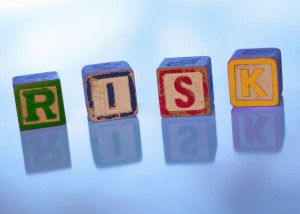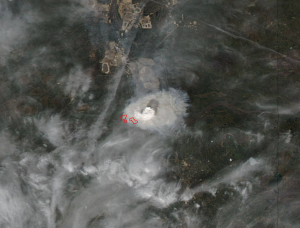Flooding Risk
May 10th, 2016Climate Policy
May 9th, 2016The Creativity of Entrepreneurs
May 8th, 2016
Becoming an Artist
Writing yesterday’s blog posting prompted me to reflect about the extraordinary work done by science journalists. In advance of writing the blog post, I read five different reports about the research performed at MIT to predict when rogue waves would strike. I came away impressed with the talent required to take highly technical concepts developed by engineers with PhD’s in fluid mechanics and make them accessible to a wider audience. I was particularly impressed with the work of MIT’s news department in producing a video about rogue waves.
They have a tough job to do – I learned this when, in connection with the work in communicating the messages in Prepare for the Worst, Plan for the Best: Disaster Preparedness and Recovery for Small Businesses, I participated in a week-end training workshop facilitated by the manager of the news center of a major research university. One of the modules addressed the challenges of writing technical content, and headlines, to engage the reader. He presented some compelling examples of his own:
- “Linkin’ Lizards!” – to headline an article about a section of DNA found in lizards native to a tiny community on the Atlantic coast of South America that exactly matches the section of DNA found in lizards in a tiny community on the Atlantic coast of West Africa. The scientists’ discovery supports a theory as to exactly where what is now South America and Africa had been connected to form one contiguous land mass until the tectonic plates shifted and the continents are now separated by an ocean. The South American and African lizards are cousins. I loved this headline; it made what could be a dry topic about reptiles DNA engaging and fun.
- “Meet the Flintsteins!” – to headline an article describing how archeologists working in Germany found fossils and other artifacts that change our understanding of how Neanderthal families lived and worked together. The American cartoon characters the Flintstones became the Germanic Flintsteins and the readers laughed and learned something new.
I learned more about the art of writing engaging headlines when my columns appeared in various publications of Dow Jones. Editors from publications such as the European or Asian editions of the Wall Street Journal, the online content for the small business section of the website WSJ.com or the weekly financial magazine Barron’s, can and do change headlines to engage their target audience in the content. So when it came time for me to develop a tagline for my own business, Prisere LLC, I reached out to a seasoned journalist to help communicate the brand. There followed a collaborative process with each of us refining and improving the ideas of the other, with successive iterations until we arrived at “Deep rooted. Farsighted™”
What I love most about entrepreneurship is the creative process, the act of bringing an idea or concept to fruition. In a typical corporate environment, people work in functional departments, specialized silos of expertise. Entrepreneurs get to think across disciplines; creative work occurs at the intersections of these disciplines. I am not a science journalist (but I was a science major in college) or a branding expert for that matter, but I get to explore those areas as I work to build my business. I hope that when this blog posts unusual content on business resilience, like research into rogue waves, it sparks some ideas in the readers. I love to hear about them.
Predicting Rogue Waves
May 7th, 2016
Going Rogue
This morning’s Providence Journal ran an excellent article, courtesy of the Cape Cod Times, describing how the work of MIT researchers may predict when rogue waves will strike. A rogue wave forms when one wave passes through another and combines forces, with an exponential increase in power. When the height of a wave doubles, its power per square foot quadruples, producing deadly force. The accompanying article describes specific local losses arising from rogue waves, such as the experience of an emergency room physician being struck face down in the ocean by a rogue wave that left him a quadriplegic.
For the shipping industry, the economic losses can be substantial. While tankers and container ships are designed for heavy seas, the power of rogue waves exceeds the design criteria by ten-fold. In June 2013, the MOL Comfort, a modern container ship, split in half, burned and sank after meeting a rogue wave. The resulting losses are estimated at $500 million. Allianz, a German insurer of global cargo vessels, predicts that there will be a loss in excess of $1 billion from the sinking of a single ship.
A rogue wave differs from a tsunami in several respects: tsunamis are triggered by land events, such as earthquakes, and can travel long distances. A rogue wave arises spontaneously from water movements and may last for seconds or minutes. The work of the MIT team may give two to three minutes’ warning of the formation of a rogue wave, possibly saving lives and property. The team developed an algorithm that looks for clusters of waves meeting certain criteria. MIT’s news office has produced an excellent, short video for additional information about rogue waves.
After reading this morning’s newspaper, I added another title to my “To Read” list (which is much longer than my “To Do” list): The Power of the Sea: Tsunamis, Storm Surges, Rogue Waves and Our Quest to Predict Disasters. The author, Bruce Parker, served as chief scientist for the National Ocean Service, and was quoted in this newspaper article about the physics of the ocean. I never appreciated that fluid mechanics could be so engaging, but now I want to learn more.
Test
May 6th, 2016
Risky Business
TTT
Wildfire Rages in Fort McMurray
May 5th, 2016
Courtesy NASA/Goddard
The entire Fort McMurray area of Alberta has been evacuated following an out of control wildfire, the worst seen in Canada in many years. As of this posting, the wildfire has burned nearly 20,000 acres in a heavily populated area. Canadian officials have mobilized firefighters, aircraft and heavy equipment to the area; however, low humidity and strong winds continue to fuel the fire. The fire is so intense that even residents of Alberta who are not directly in the likely path of the fire’s expansion are at risk for hazards associated with smoke inhalation. (All smoke contains carbon monoxide, carbon dioxide and soot.) Medically vulnerable individuals, such as those with respiratory ailments, fetuses, young children and the elderly are at elevated risk of harm from smoke exposure.
This image, captured by a spectroradiometer equipment aboard a NASA satellite, shows the Fort McMurray area almost completely obliterated by the clouds of smoke rising from the fire. There are three things we should all do: (1) pray for rain in Alberta – the area has been arid for some time and emergency response officials believe rain is the only hope of slowing the fire’s path; (2) support the relief efforts with a contribution to the Canadian Red Cross; and (3) re-check our own fire safety protocols. Does your business have an up-to-date evacuation plan in the event of a widespread fire? And have you confirmed that adequate fire safety plans are in place to protect your home and family and the homes and families of your employees?
Poignant Reminder of Fire Hazards
May 4th, 2016
Irreplaceable
The beauty of a historic church was still visible even after being gutted by a fire on Sunday. The Serbian Orthodox Cathedral of Saint Sava, a 160-year-old landmark structure in the Chelsea area of Manhattan, was severely damaged by a fire reportedly caused by candles that were not fully extinguished following the Orthodox Easter worship services. Church officials are trying to determine if any part of the structure may be preserved and let’s pray that they are successful. In addition to its historic significance, St. Sava was the spiritual home to 700 or so people in its congregation who attend weekly services. Disasters can be devastating to cultural and historic treasures. What struck me about this disaster was the speed with which the fire spread; within a few hours, the flames from the church candles had engulfed the entire structure. It is a powerful reminder of the importance of fire safety and worth remembering as the 2016 storm season officially begins within a month. The hurricane forecast will capture the news headlines, but fires remain the more common threat.
Risks of Publishing Registration Codes
May 3rd, 2016
Not for Public Viewing
Today, ADP explained how cyber-thieves were able to steal sensitive tax and salary information belonging to employees of companies that use ADP’s payroll service. Detailed income data of a dozen or so of ADP’s 630,000 corporate clients were stolen by cyber-criminals. ADP explained that its computers were not hacked; rather, the cyber-criminals were able to obtain online registration codes that employees use to access their payroll data with personal information about the employees captured from other sources. What is truly scary about this data capture is that it highlights the extent to which a black market exists for personally identifying information. ADP advises its corporate clients against publishing registration codes for its service to public-facing websites and notifies them of the potential risks. Now the cyber-criminals will have an easier time stealing next year’s tax refunds from these employees as they can verify income data and possibly circumvent the IRS’s anti-fraud controls that check reported income. The take-home lesson is never publish any links to confidential information where they can be accessed by those who have no reason to see them.
Small Business Week
May 2nd, 2016Hooray for Our SBA Administrator!
May 1st, 2016
Supporting Small Business
Continuing its excellent series for the 2016 Small Business Week, USA Today features an interview with Maria Contreras-Sweet, the Administrator of the U.S. Small Business Administration. Here is my favorite part of the interview:
Q: What’s a main message that you would like to get out there during Small Business Week?
A: Let’s level the playing field for small businesses. I see small businesses getting the run around at every turn. When a corporation arrives at a municipality and says, “We’re going to locate here,” that municipality says, “We’re going to give you tax breaks; we’re going to open up this for you.” When a small business shows up in City Hall, (they’re told) “Stand in line, take a ticket.”
Exactly – cities and states offering incentives, subsidies and tax breaks to large corporations are shifting the tax burden to smaller businesses and effectively acknowledging that they are such awful environments that they have to bribe large corporations (they are the ones with the clout to extract the concessions) to remain. I am glad Contreras-Sweet has a Cabinet-level position. It is so rare to have a plain-spoken person in public office.